On September 22 to 23, 2023, the 22nd International Society of Cryosurgery (ISC) conference was held in Vienna, Austria. This time, experts and scholars from different countries and regions gathered together via online to participate in this event. Fuda general president Xu Kecheng, president Niu Lizhi, vice president Liang Bing, and deputy director of the fifth medical department Liu Shupeng were invited and deliver speeches.
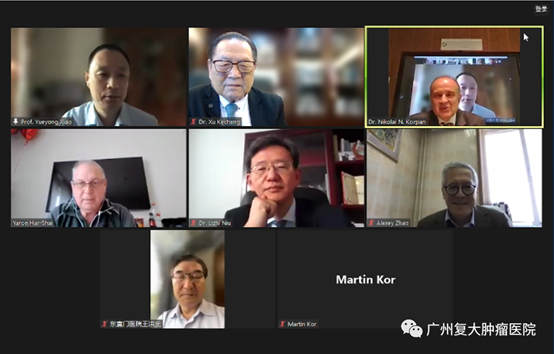
The International Society of Cryosurgery was founded in Austria in 1972. After more than fifty years of development, cryosurgery for tumor treatment has become increasingly mature. The conference is divided into two parts: academic lectures and elections. It analyzes and discusses the current cryoablation research in clinical applications, basic research and many other aspects. President Niu Lizhi was elected as president of the 23rd International Society of Cryosurgery.
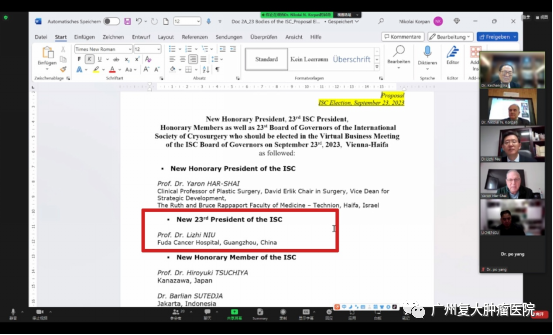
Honorary president Xu Kecheng, also known as president of Guangzhou Fuda Cancer Hospital, welcomed experts and friends from all over the world and wished this conference a complete success. He thanked the members and experts of the ISC for their contributions, and hoped that the younger generation could stick together to improve their professional skills and further standardize and develop cryoablation technologies.
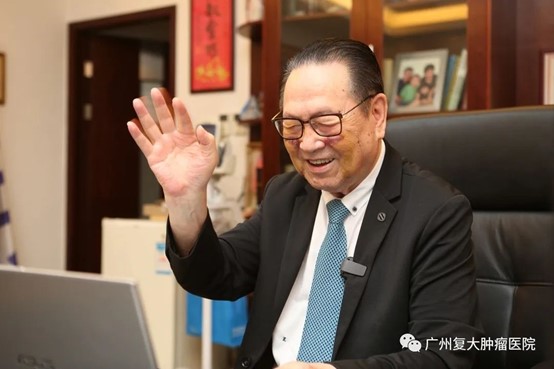
President Xu delivered a speech titled "Is Cryoablation Effective in Prolonging Survival in Patients with Progressive Cancer? Inspired by the Analysis of 25 Cases who Survived More than 10 Years". This study selected 25 eligible cases among 8,371 patients who have received cryosurgery.
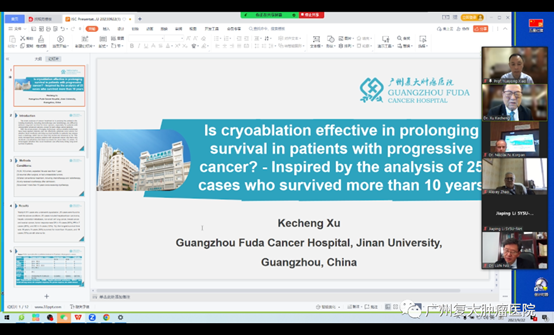
These cases including hepatocellular carcinoma, metastatic liver nodules, non-small cell lung cancer, breast cancer and ovarian cancer, etc., and all meeting the following conditions:
1) All are pathologically confirmed cases with life expectancy less than 1 year;
2) Recurrence after surgery, or the tumor cannot be removed;
3) All are in the advanced stage and have failed conventional treatment;
4) Only receive cryoablation;
5) Survive for 10 years or more after receiving cryotherapy.
The study found that among these cases, the tumor response rate was CR in 15 cases (60%), PR in 7 cases (28%), and SD in 3 cases (12%). Among them, 64% of patients have survived 10 to 15 years, while 36% have survived 16 years or more. 72% of them are still alive.
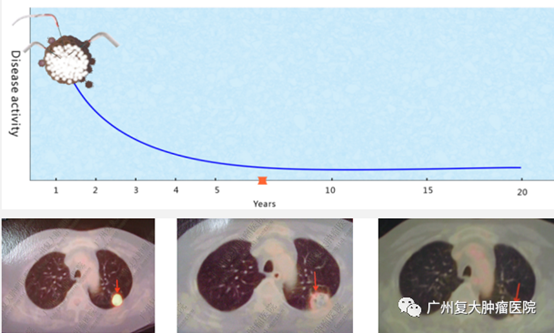
▲Long-term relief after one-time cryoablation. It is rare that the patient's tumor disappears after cryoablation only and the patient survives in long-term disease-free, shown in 3 cases.
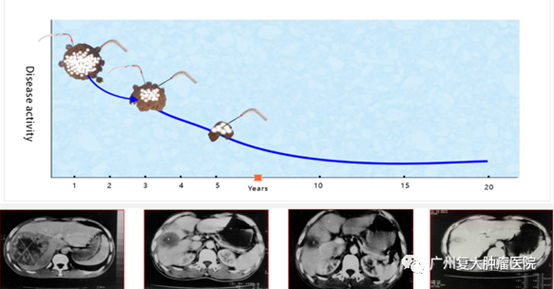
▲Long-term relief after repeated cryoablation. After cryoablation, the patient's tumor experienced short-term remission but quickly relapsed which was repeated several times. Finally, patients remain progression-free or "living with cancer" for many years. So far, the survivors basically belong to this type, shown a total of 13 cases.

▲Relapse after long-term remission. After receiving cryoablation, patients experience long-term remission for many years, and usually relapse after 8-10 years. Then they undergo cryoablation and relapsed many times. Most of the cases that died during study were this type, 9 cases.
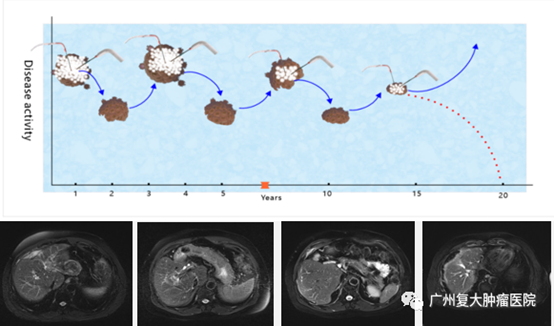
▲Continuous undergo cryosurgery and continuous relief. After each cryoablation it went into remission for several months, then new tumor appeared, and so on, patients can "living with cancer" for a long time. Seen 3 cases.
Cryoablation-induced microenvironmental remodeling and expansion of tumor-specific T cells are also manifested by the expression of tumor-infiltrating lymphocytes (TILs). Unlike thermal ablation technology, which denatures tumor antigens, rapid freezing of tumors can preserve potential tumor-associated antigens (TAAs); compared with resection, cryoablation induces stronger tumor- specific TIL responses, suggesting that the anti-tumor process can prevent tumor recurrence and transfer. Based on existing theories and practices, President Xu proposed that cryoablation can effectively prolong the survival time of advanced patient, and this may be related to the long-distance effect of cryo-immunization.
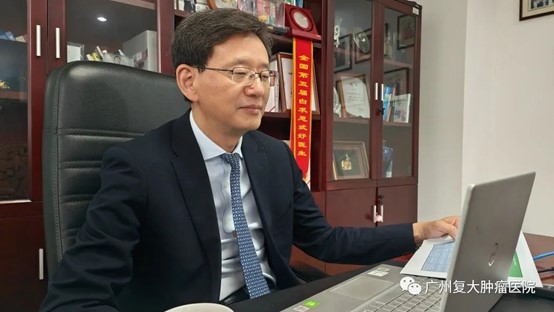
As the president of the 23rd International Society of Cryosurgery and vice president of the Asian Cryosurgery Society, president Niu Lizhi present a report titled "Cryoablation for Lung Cancer". Cryoablation is increasingly practiced in early and even advanced lung cancer cases. Compared with thermal ablation such as radiofrequency, microwave ablation, etc., cryoablation uses low temperature to rapidly cool down the diseased tissue to destroy cells, causing cell necrosis or apoptosis, thereby achieving the purpose of treatment. It can effectively ablate lung tumors, especially for lung tumors that are relatively central, closely adjacent or invade into the mediastinum/chest wall.
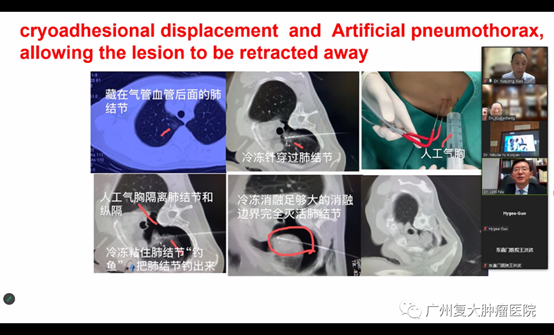
In addition, the dual-probe method can frame ground glass nodules (GGO), which improve the accuracy, success rate and efficiency of cryoablation of small lung cancer. It could achieve satisfactory clinical results when the edge of the ice ball is 1.0 cm larger than the edge of the tumor. After extensive research and practice, three-cycle cryoablation has been optimized for lung tumor ablation and has been proven to have a lower recurrence rate and complication rate. The advantages of cryoablation include good visualization via CT scan, the ability to reduce pain, and the flexibility to be combined with radiotherapy, chemotherapy, and immunotherapy after surgery, making it a safe and feasible method.
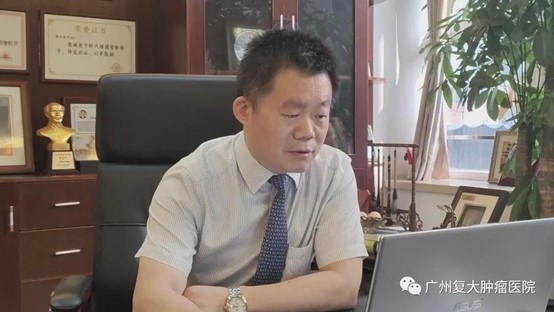
Vice President Liang Bing gave a report on "Cryoablation for liver tumors and complication prevention". More than 800,000 people die from liver cancer every year and China accounts for more than half of them, making it the second leading cause-of-death cancer in China. The traditional treatment is still based on surgical resection, but most patients are not suitable for surgery as they may be in the middle or advanced stages when diagnosed, too old or come with other diseases. Only a few have the opportunity to undergo surgery or receive liver transplantation.
The results of several randomized controlled trials have shown that surgical resection and local ablation have comparable long-term outcomes for small liver cancers, and that supplementary ablation or salvage surgery can effectively improve patients' overall survival. For those who refuse surgery, cardiopulmonary insufficiency or too old to stand surgery, and those with severe hepatitis, cirrhosis, poor liver function, those who cannot stand the surgical resection of huge or multiple masses, or those with residual liver cancer or tumor remnants at the tip after surgery, cryosurgery is the option.
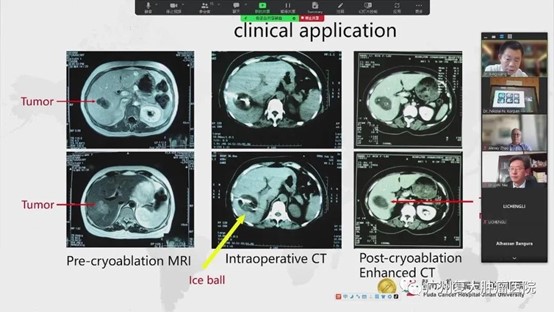
Complications of liver puncture and ablation are prominent clinical problems. The main complications include fever, loss of appetite, local pain, pneumothorax/hemothorax/massive pleural effusion, liver rupture, abdominal bleeding, chills, arrhythmia, etc. Therefore, adequate preoperative assessment and preparation, precise intraoperative guidance, precise puncture, reasonable needle insertion, and real-time intraoperative and postoperative monitoring can effectively avoid the occurrence of complications.
In addition, studies have found that cryoablation can not only control the primary tumor, but also induce specific or non-specific anti-tumor responses, producing an "abscopal effect." With the emergence of new anti-tumor immunotherapies such as immune checkpoint inhibitors PD-1/PD-L1 and CAR-T in recent years, immunotherapy has become a new direction in tumor treatment. A large number of clinical applications have shown that the combination of cryoablation with radiotherapy, chemotherapy, and immunotherapy has a positive effect in treating liver cancer, especially in combination with immunotherapy, such as using immune activators to produce "in situ tumor vaccines" to enhance systemic anti-tumor immunity, in which achieve the purpose of inhibiting residual tumors and recurrence.
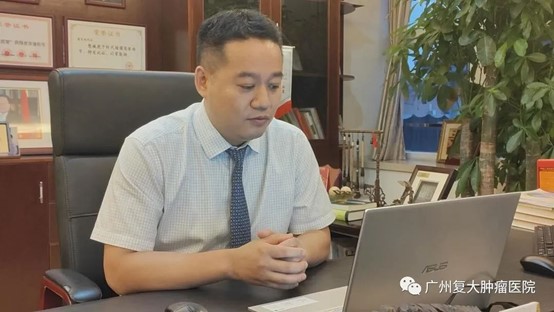
Liu Shupeng, deputy director of the fifth medical department, gave a speech titled "Progress in Cryoablation of Breast Cancer". Breast cancer has become the most common malignant tumor among women worldwide. With the development of imaging technology and the promotion of early screening, the detection rate of early breast cancer has gradually increased. Currently, surgical treatment of breast tumors tends to use breast-conserving radical surgery. However, breast-conserving radical surgery will still cause certain damage and affect the appearance. Therefore, cryoablation is gradually used in the treatment of early-stage breast tumors as patients' awareness of better appearance grow.
Clinical studies show that the recurrence rate after cryoablation for early-stage breast cancer is about 2.06%, which is similar to the results of breast-conserving surgery. Compared with traditional treatment, cryoablation has the advantages of simple operation, less damage, fewer complications, no damage to the appearance, mild pain, and quick recovery. It is recommended by clinical research results in recent years that cryoablation is a good choice for breast cancer with luminal A type, negative lymph nodes, carcinoma in situ or ductal carcinoma, and single tumor less than 1.5cm. For invasive breast cancer, cryoablation can also be used as an effective palliative treatment.
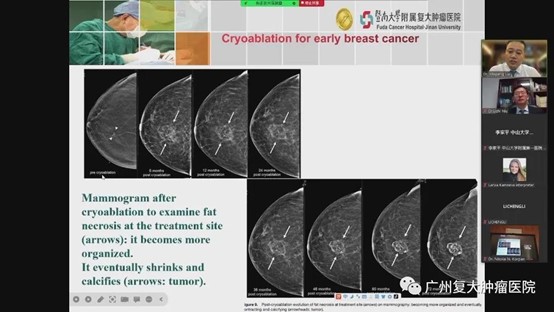
The immune effects caused by cryoablation have previously been confirmed by some preclinical animal models and clinical cases. For instance, Professor Sabel found in cryoablation experiments on mouse that cryoablation can induce tumor-specific T-cell responses in TDLN and increase systemic NK-cell’s activity, which is related to tumor rejection when attacked again. Compared with surgical resection, cryoablation to generate tumor-specific immune responses can eradicate systemic micro metastases and improve prognosis.
In addition, cryoablation can be combined with immunotherapy and enhance the immune response effect. Preliminary study data show promising synergy between cryoablation and immunotherapy. Research on cryoablation and immune and targeted therapy of breast tumors has found that all adverse reactions are controllable and acceptable. Triple therapy not only achieved good clinical efficacy, but also improved patients' quality of life, reduced circulating tumor cell (CTC) levels, reduced the expression of carcinoembryonic antigen (CEA) and cancer antigen 15-3 (CA15-3) and enhance immune function. Of course, how to determine the appropriate conditions for cryoablation, which improve the efficacy of comprehensive treatment, and reduce treatment-related toxicity is still the main direction of current clinical research.
Today, China’s cryoablation technology has taken a leading position in the world. At Guangzhou Fuda Cancer Hospital, we have accumulated rich experience in cryosurgery, attracting patients from all over the world. We have won the "World Cryotherapy Special Contribution Award" from the International Society of Cryosurgery, the "Outstanding Contribution Award" from the World Conference on Interventional Oncology, and the "Outstanding Contribution Award" from the Chinese Academic Conference on Minimally Invasive Treatment. In the future, Guangzhou Fuda Cancer Hospital will continue to keep up with the development of medical technology and wholeheartedly provide better treatment for cancer patients.